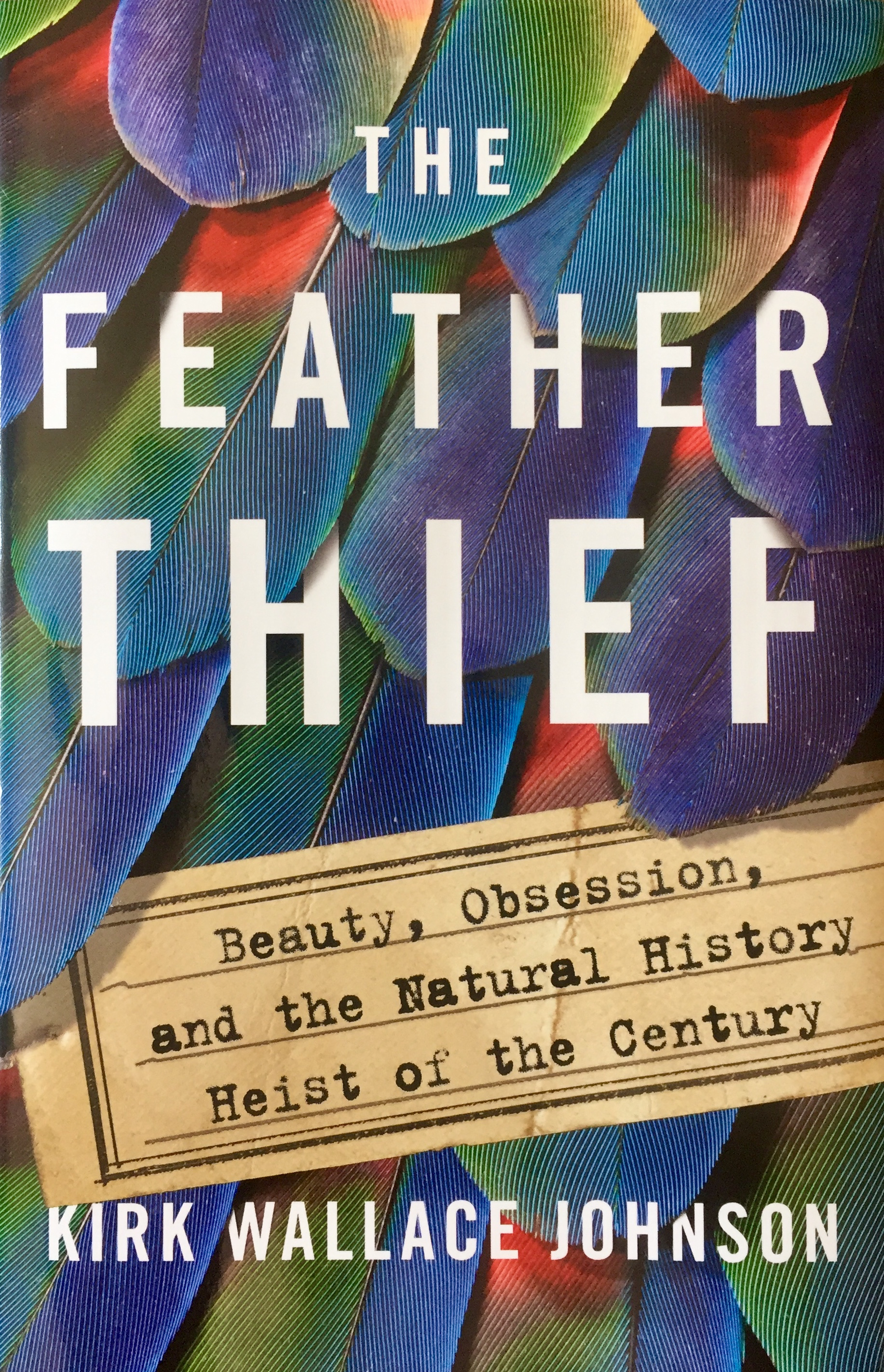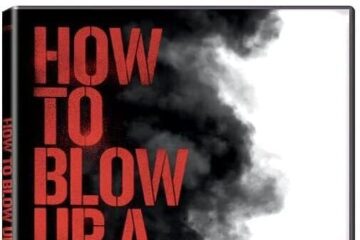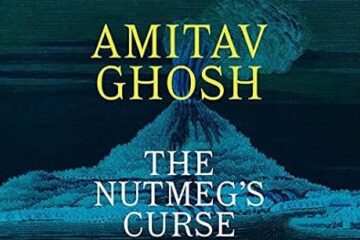Kirk Wallace Johnson
Viking 2018
I wrote a poem as a college freshman—quality suffering—that mourned the death of Sir Edmund Hillary, one of the first men, along with Tenzing Norgay, to summit Mount Everest. Although Hillary had died nearly a year earlier, I was still lamenting my missed opportunity to send the famous mountaineer a letter. My dad’s copy of Nothing Venture, Nothing Win sat on my bookshelf at home, unsigned. Hillary’s death, I was convinced, was an irreparable loss to the annals of human interaction with the natural world.
Had I been paying attention to more-current events, I may have heard the news of a robbery at the British Museum of Natural History. It was around this time (the months straddling 2009-2010) that Edwin Rist, an American student in London’s Royal Academy of Music, smashed his way into the Tring museum and made off with 299 specimens of rare, exotic birds. In a rolling suitcase.
As it happened, I didn’t hear about the event until this year with the publication of Kirk Wallace Johnson’s book, The Feather Thief: Beauty, Obsession, and the Natural History Heist of the Century. Digging into the story, I was surprised by the amateurishness of the heist: a rock-bashed window and sluggish getaway by commuter train. And the fact that the loot—priceless to the history of science—was worth many hundreds of thousands—if not millions—of dollars to a cloistered community of salmon fly-tying obsessives. But maybe I shouldn’t have been. A story that lured me in under the guise of absurdity morphed into such an honest tale of human nature that I found myself wondering how I ever disbelieved it.
Salmon fly-tying came about in the mid-to-late 1800s and rapidly distanced itself from the practical heart of fly fishing. The mimicry of an ecosystem’s most subtle intricacies was abandoned for the satisfaction of the human eye. As Johnson tells us, breeding salmon will strike at any intrusion near their river-bed nests. This instinct means the use of exquisite feathers from endangered birds for these flies is a convention born only of Victorian flamboyance—excess that burns ostentatiously into the twenty-first century.
Most, if not all, salmon flies tied today are for display purposes only, and it’s this perpetuation of a Victorian-era frenetic fixation that is the undertow of Johnson’s book. Part crime mystery, part anthropological study, this book examines humanity’s deep-seated infatuation with glamour, exclusivity, and exoticism, as well as, its consequences.
Aestheticism—surface-level appreciation; art for art’s sake—is the Anglo-centric perspective that dominates our relationship with nature today. With this criticism, Johnson’s work seems to echo that of Alison Byerly, examining our refusal to meet the environment on its own terms. The scenic overlooks which populate mountain-bound highways are only aesthetically-framed morsels of wilderness which gratify a picturesque movement. So too are the salmon flies tied with black-market feathers.
Salmon fly-tying illustrates in miniature the great departure from nature that humans have undergone: abandoning meaningful, honest collaboration with the environment for the gluttonous consumption of its most finite resources. Of what matter is this unfettered pillage in the face of short-lived satisfaction? The rarity of a creature—even the existence of the creature itself—is appreciated only by how readily it can be repurposed.
Johnson more than chases this theme in his book; he embodies it. Himself depleted and dejected from years of fighting bureaucracy as an Iraqi-refugee advocate, he turns to a kindred spirit: the waterways of the mightiest capitalist nation on earth. It is in the rivers of New Mexico, seeking harmony with the other punted exiles of the American juggernaut, that Johnson first hears about salmon fly-tying and Rist’s audacious theft. Perhaps from being so disenchanted himself, Johnson turns vigilante to recover the missing birds and bring closure to a case that languished and saw a resolution ill-befitting the crime.
The lesson, perhaps, is that obsession is not a Victorian convention. It may have been exacerbated in the era of abundance, but even Johnson demonstrates the ubiquitous-ness of obsession in his pursuit of answers within his book. It is seen in all places across all ages, but even when this species trait is directed at unraveling the complexities of the world (I’m thinking here of the work of naturalists like Alfred Russell Wallace), obsession’s pervasive counterpart—greed—all too often crashes the party.
I’ve had a photo of Tenzing Norgay, ice axe aloft, taped to my bedroom wall or stashed in a desk drawer or marking my page in a novel for many years now, but Johnson’s book has made me look at that photo differently for the first time since I clipped it from a National Geographic magazine in high school. Like penetrating the jungles of Papua New Guinea and collecting beetles and lizards and birds, what started off as a quest to plumb the most remote mysteries of our home has ended only in human exploitation and mistreatment. Today, Everest has joined the fetid banks of the Ganges and the precipitously-diminishing biodiversity on Earth as another victim of humanity’s hubris. I must imagine that this mountain and many other places would have been okay, if not much better off, had we never managed to reach them.
Of the 299 birds stolen from the museum, only 193 were returned, many plucked, clipped, or missing identification tags without which they hold little scientific value.
Some say the birds are doing no good tucked away in the drawers of the British Museum of Natural History. Why not offer up the corpses for a more practical purpose?
Because salmon fly-tying’s only end is contrived beauty. Because appreciation should expand beyond the human perspective. And because, as Johnson helps us realize, one day very soon the contents of those drawers will be the only record of the remarkable cohabitants wasted upon humanity.
If you’re interested in more information on the plumage trade, check out Andrew Furman’s essay, “Yellow-Crowned Night Heron,” published in our Spring 2018 issue.
Reviewer Bio: Brendan Curtin is a triple-crown backpacker who grew up in the snowbelt of Ohio and sheep pastures of New York. A 2013 graduate of Hiram College, he joined the MFA in Creative Writing and Environment program at Iowa State University in 2017. He loves bears, owls, and the smell of old sleeping bags. His work is forthcoming in Appalachia.




